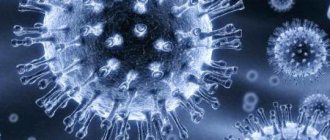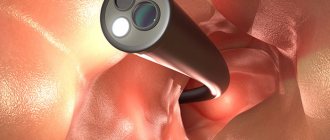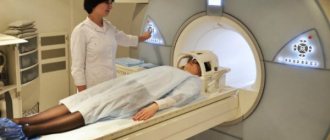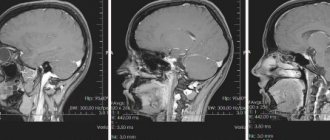HIV infection
The human immunodeficiency virus enters the body with the biological fluids of an infected person, or more precisely with sperm, blood or breast milk. Contrary to what some people believe, HIV is not transmitted through tears, saliva, sweat and urine because the concentration of the virus in these fluids is too low to cause infection. Since AIDS is not spread by airborne droplets or touch, infected people do not pose a danger to healthy people. HIV infection can be transmitted in the following ways:
- During unprotected sexual intercourse through sperm or blood (in case of wounds on the genitals).
- During a blood transfusion - if the donor was an infected person (this happens extremely rarely, since donor blood is usually tested for viruses).
- Through contaminated medical instruments - syringes, instruments for piercing, tattoos, manicure, pedicure, etc.
- Vertically, that is, from the pregnant woman to the fetus.
- Through mother's milk while feeding the baby.
It is impossible to determine exactly how long it takes for HIV to manifest itself in an infected person, since depending on the state of the immune system and the presence of viruses that cause other infectious diseases in the body, the incubation period of HIV infection can last from 2-3 weeks to 3 months, and in some cases - up to six months or more. The incubation period or latent period of infection is the time from the penetration of the virus into the body until antibodies to it appear in the blood, and before the immune system begins to produce antibodies to HIV, tests for this disease will give a negative result.
Pre-AIDS
A few years after the virus enters the body, the pre-AIDS stage begins. The immune system ceases to cope with the viral load, as a result of which a person’s existing chronic diseases begin to worsen, for example, herpes infection, candidiasis and stomatitis.
How long does it take for pre-AIDS to occur after HIV infection? As a rule, this stage occurs 1-2 years after the end of the latent period.
Signs and symptoms of HIV infection in stage IIIB
This stage of HIV infection is characterized in men and women by severe symptoms of impaired cellular immunity, and the clinical manifestations are nothing more than the AIDS-associated complex, when the patient develops infections and tumors that are not found in the AIDS stage.
- During this period, there is a decrease in the CD4/CD8 ratio and the blast transformation reaction rate; the level of CD4 lymphocytes is recorded in the range from 200 to 500 per 1 μl. In a general blood test, leukopenia, anemia, and thrombocytopenia increase; an increase in circulating immune complexes is noted in the blood plasma.
- The clinical picture is characterized by prolonged (more than 1 month) fever, persistent diarrhea, profuse night sweats, severe symptoms of intoxication, and weight loss of more than 10%. Lymphadenopathy becomes generalized. Symptoms of damage to internal organs and the peripheral nervous system appear.
- Diseases such as viral (hepatitis C, common herpes zoster), fungal diseases (oral and vaginal candidiasis), persistent and long-lasting bacterial infections of the bronchi and lungs, protozoal lesions (without dissemination) of internal organs, localized Kaposi's sarcoma, pulmonary tuberculosis are detected. . Skin lesions are more widespread, severe and longer lasting.
Rice. 13. Bacillary angiomatosis in HIV patients. The causative agent of the disease is a bacterium of the genus Bartonella.
Rice. 14. Signs of HIV in men in the later stages: damage to the rectum and soft tissues (photo on the left), genital warts (photo on the right).
How long do people live with HIV?
In this case, everything depends on three important factors - the timing of the diagnosis, the treatment performed and the general health of the patient. The statistics on HIV infection and AIDS provide the following figures.
- Timely diagnosis and subsequent HAART – life expectancy is 20-50 years.
- Detection of HIV infection in late stages and subsequent HAART – 10-40 years.
- Undiagnosed infection without treatment – 9-11 years.
- AIDS without treatment – 6-9 months.
An equally important factor influencing the life expectancy of HIV-infected patients is the general state of health and immunity. Naturally, people with strong immunity, who do not have chronic diseases and congenital pathologies, will live longer. At the same time, a weakened body is less resistant to the virus. Therefore, in addition to HAART, all HIV-positive patients are recommended to have a healthy lifestyle and proper nutrition. They must protect themselves from infectious and colds. Strengthen your immune system, take care of your body and undergo regular examinations.
Incubation period
The immunodeficiency virus belongs to the group of retroviruses and the genus of lentiviruses. It has the appearance of a sphere and is approximately 60 times smaller in size than a red blood cell. The first signs of HIV appear only after the end of the incubation period. Immediately after infection there are no signs of the presence of the virus. The incubation period lasts from 14 days to 3 months. At this time, even special laboratory tests cannot detect the presence of the virus in a patient.
The immunodeficiency virus is an intracellular parasite. Once it enters the blood, it attacks macrophages, lymphocytes and some other cells. The virus rapidly divides and spreads throughout the cells. After a critical increase in the number of the virus, the defense mechanisms cease to respond correctly to the pathogenic microflora that appears in the body.
Acute infection
The most common first manifestation of HIV infection is symptoms resembling infectious mononucleosis. A person’s temperature rises to 38˚C or higher for no apparent reason, inflammation of the tonsils (tonsillitis) appears, and the lymph nodes become inflamed (usually the cervical ones). The cause of the increase in temperature often cannot be determined; it does not decrease after taking antipyretics and antibiotics. At the same time, severe weakness, fatigue, and profuse sweating appear, mainly at night. The patient suffers from headache, loss of appetite, and disturbed sleep.
- When examining the patient, one can determine an enlargement of the liver and spleen, which is accompanied by complaints of heaviness in the hypochondrium and aching pain there. A small maculopapular rash appears on the skin in the form of small pale pink spots, sometimes merging into larger formations. Long-term intestinal upset appears in the form of frequent loose stools.
- In blood tests with this variant of the onset of the disease, an increased level of leukocytes, lymphocytes is determined, and atypical mononuclear cells are detected. This variant of the first symptoms of HIV infection is observed in 30% of patients.
- In other cases, acute infection may manifest as serous meningitis or encephalitis. These conditions are characterized by intense headache, often nausea and vomiting, and increased body temperature. Sometimes the first symptom of HIV infection is inflammation of the esophagus - esophagitis, accompanied by chest pain and difficulty swallowing.
Other nonspecific symptoms of the disease, as well as an asymptomatic course, are also possible. The duration of this stage ranges from several days to 2 months, after which all signs of the disease disappear again. Antibodies to HIV may also not be detected at this stage.
Stages of HIV
As we wrote earlier, HIV is mostly asymptomatic in women. Often a woman even suspects the presence of a virus in her body. The stages of HIV development in women are as follows:
- Incubation: considered from the moment of infection until the first signs appear. It can last from 2, 3 months to 1-2 years. At this time, the virus begins to multiply in the body, but at this time there is no threat to the cells of the immune system.
- Primary stage: this stage lasts on average 3-4 months. At this time, antibodies appear. Symptoms during this period are very mild. Many women do not even notice changes in their bodies.
- Secondary: the duration of the period is on average 7 years. The flow is slow. Symptoms appear gradually. The first thing that appears is temperature fluctuations, and sometimes rashes appear on the skin. But the most important symptom of HIV is enlarged lymph nodes.
- Third stage: otherwise called progressive. The duration of this stage depends on the human body. This stage is characterized by exhaustion of the immune system, and concomitant infections may occur.
- Stage four: called AIDS - irreversible stage. During this period, treatment is no longer able to help. At this time, medications for AIDS have not yet been invented. The patient is prescribed a maintenance course of therapy. At this stage it is typical: skin lesions, hepatitis, pneumonia, thrush (candidiasis), ulcers on the mucous membranes.
Latent period
How long does it take for HIV infection to manifest itself with clear symptoms that cannot be confused with other diseases? On average, this occurs 7-10 years after infection. During this time, the immune system copes with increased stress. In this case, there is a rather characteristic sign: a person’s lymph nodes are enlarged for no reason. At the same time, he may often suffer from infectious diseases.
During the latent period, HIV can be detected after infection during a medical examination. Also at this time, an increased level of lymphocytes and leukocytes is detected in the blood, and signs of mononucleosis appear.
How long does it take for HIV to be transmitted after infection? A person becomes contagious several weeks after the virus enters the body. However, during the latent phase, he does not suspect that he is sick, as a result of which he can infect many other people.
What is the incubation period of HIV infection? How long does it take for the disease to appear?
Oddly enough, the incubation period of HIV has a duration directly proportional to the strength of the immune system. The more active the immune cells are, and the greater their number, the shorter the latent period of infection.
The virus circulates freely in the blood without undergoing changes in the liver cells. Unlike bacteria, which “make themselves known” in the first hours after infection, the virus needs to penetrate the cell. Only then do the manifestations of the disease begin.
Incubation period of HIV infection
Once inside the cell, the immunodeficiency virus invades the cell nucleus and changes the genetic program. As a result, from T-helpers - helpers of immune reactions, nuclear-free forms similar in composition appear, imitating HIV.
To activate the immunodeficiency virus, the following conditions are necessary:
- the presence in the body of active chronic infections, the pathogens of which stimulate the constant production of antibodies,
- sufficient activity of T-lymphocytes - cells that carry out immune reactions,
- the presence of T-helpers not involved in immune processes.
The duration of the incubation period for HIV ranges from two weeks (the standard immune response) to 10 years or more.
A person infected with HIV is a carrier of the infection, regardless of whether the disease manifests itself or not.
Do you know what an endometrioid cyst is? The article contains detailed information about this neoplasm.
HIV seronegative period
This occurs for reasons of low aggressiveness of T-lymphocytes and can occur in two cases:
- Every single T-lymphocyte (theoretically) is busy “working” with other pathogens.
- There are not enough T-helpers in the blood, and new ones are not produced for some reason (often objective).
As a result, immune cells do not come into contact with the virus, and antibodies to HIV are not produced.
Groups of people with the shortest incubation period for HIV infection
People who have enough immune cells, and they are constantly being produced again:
- babies - their T cells are in the growth stage,
- drug addicts are individuals “living on debt”, in whom all processes are enhanced to the very maximum: from the activity of the central nervous system to the production of blood cells.
The question of how long it takes for HIV to manifest itself in the body of a person who is ready for an immediate immune response is beyond doubt. Typically, the seronegative period in such people is shortened to one to two weeks.
Congenital forms appear immediately after birth, because the child experiences the prodromal period of HIV infection in the prenatal period.
Have you heard about the hog queen? It treats many women’s diseases; in the article we looked at its features and how it helps with endometriosis.
For an ordinary illness, you simply begin treatment. What if you're pregnant? The matter already concerns two lives. We wrote about cervical erosion during pregnancy in the next article.
Does the length of asymptomatic carriage depend on the route of HIV infection?
During “classical” sexual intercourse, infected blood enters the general bloodstream through the inferior vena cava. An immediate meeting with T-cells is simply excluded. With this route of infection, it is very difficult to calculate how long it takes for HIV to manifest itself and the very presence of the virus in the human body.
During anal sex, infected blood is absorbed in the rectum on three floors:
- Into the mesenteric vein,
- Into the inferior vena cava
- Into the portal system of the liver.
The vascular bundle of the rectum perceives viruses in all three circulatory systems, which accelerates the contact of the virus with T cells.
With a vertical route of infection - through the vessels of the umbilical cord - infected blood immediately enters the liver, where free T-lymphocytes accumulate.
As a rule, the window period for HIV infection depends on the number of viruses that have entered the body. When there are a lot of them, regardless of the inertia of immune T cells, they become forced to come into contact with immunodeficiency viruses.
Just one affected T-cell is enough, the further mechanism of development of the infection becomes irreversible. Antibodies begin to be produced - cells aimed at direct contact, which ends in complete suppression of the immune system.
As soon as the number of immune cells free from fighting HIV decreases, symptoms of HIV infection immediately appear. Acquired immunodeficiency syndrome enters its first clinical stage - a period of acute infection of the organs of the lymphoid system.
How the analysis is carried out
Modern medicine offers three versions of the study. They differ in assessment technology and basic monitoring material.
We are talking about tests:
- for antibodies;
- for nucleic acids;
- combined type.
In some cases, if a false positive result is suspected, it is more effective to repeat the procedure or use a different research format.
Best materials of the month
- Why you can't go on a diet on your own
- 21 tips on how to avoid buying stale food
- How to keep vegetables and fruits fresh: simple tricks
- How to curb your sweet cravings: 7 unexpected products
- Scientists say youth can be extended
The most popular option is an antibody test, which requires blood. The result is quite reliable if carried out in time, when protective proteins have already begun to be produced in sufficient quantities for their free fixation. It is believed that it takes from two to 12 weeks to produce them. More precise timing depends directly on the individual characteristics of the organism.
The combined approach includes monitoring not only antibodies, but also antigens. The latter are part of the virus. In order for the test to be valid, you will need to wait at least two weeks after possible infection. But ideally, you will have to endure quarantine for about a month and a half, which is quite enough for the body to develop a response.
Evaluation using nucleic acid counting deserves special attention. This variation helps to make a determination in the shortest possible time - after the first week after the expected transmission of infection. But for such operational readiness you will have to pay a lot more.
Against this background, it is most productive to use the services of clinics that use combined strategies or tactics with antibodies. Experts insist that all those who have received a dubious result with a classic immunoblot should resort to the PCR technique.
It is also prescribed to all those who have already been diagnosed with the disease, and it remains to figure out which specific genotype was introduced into the body. The analysis also helps as a control for the distribution of the viral load in the body. It is often preferred if it is necessary to identify the HIV status of newborns from infected mothers, or after blood transfusion in questionable conditions.
Antibodies to HIV appear a week after infection - fact or fiction
No one can say clearly when antibodies to HIV appear. Experiences and studies of scientists and medical specialists involved in the study of this disease have led to the conclusion that this happens approximately seven days after the disease enters the bloodstream. The time it takes for antibodies to HIV to appear depends on a number of related factors. We are talking about how much infection has entered the carrier’s body, as well as how long it will take for the virus cells to become active.
The appearance of antibodies to HIV after infection begins after the infection begins to reproduce new cells and destroy proteins of the immune system. The latter are called CD-4. They play a special role in the body of a healthy person. The point is that these cells are designed to protect the body. Initially, the body copes with the disease on its own. The virus cells are destroyed by leukocytes. How long does it take for antibodies to HIV to appear? They occur several days or weeks after infection. But their quantitative composition is initially not very large. The concentration of AT in the blood is small, which means it is not visible during analysis and further examination of the material.
The earliest time for detection of antibodies to HIV is three weeks. But this does not mean that twenty-one days after possible infection you should go for a check. It is recommended to be tested for HIV antibodies after approximately thirty days. In some cases, even this period is insufficient. The ability to detect a dangerous disease depends on the characteristics of the human body and a number of other factors. Medicine knows of cases where the immunodeficiency virus was detected only six months after infection.
After the infection enters the body, the production of AT begins. As a rule, after four to five weeks they become possible to detect. In medicine, there is a special term intended to designate the period when the body cannot cope with the virus and the antibody becomes sufficient to be determined through analysis. We are talking about seroconversion. Most often, it coincides with the beginning of the period of early manifestations of the immunodeficiency virus. It is not always possible to determine how long it takes for antibodies to HIV to appear. However, modern medicine is able to identify the estimated time of infection by the quantitative composition of antibodies and the body’s reaction to them.
HIV antibodies are guaranteed to be detected after 3 months, the same as after a month or five weeks. To diagnose the immunodeficiency virus by detecting antibodies in serum or blood plasma, an enzyme-linked immunosorbent assay is used. It is also called ELISA testing. In modern medicine, the fourth generation ELISA is used. This is ultra-sensitive testing that can detect a dangerous disease at the earliest stages. Using this type of analysis, it is possible to identify healthy people, as well as those whose diagnosis of the immunodeficiency virus is questionable. More accurate diagnostics are used to further identify the infection. After all, positive AT on the test form does not mean that a person is infected. The body sometimes produces them incorrectly, for example, with kidney disease or pathologies of the immune system.
Interesting materials on this topic!
28 Sep 2020, 12:25 Psoriasis of the scalp The current state of the external environment and many other provoking factors cause…
22 Sep 2020, 17:21 General blood test for HIV Infection with the immunodeficiency virus is not yet a death sentence for a person. Early detection of its presence in the body and timely initiation of antiretroviral drugs helps prevent...
22 Sep 2020, 16:21 HIV test results Today, a test for the immunodeficiency virus is prescribed during almost any examination...
Alexey — 13 Sep 2020, 21:19
Maxim, are you quite the same?
Maxim — 20 Oct 2020, 22:49
All doctors lie. Antibodies appear from 6 months to 3 years.
How long does it take for HIV tests to be ready?
The results of most HIV tests become known within 3-10 days from the moment they are taken. The period is determined by the level of material and technical equipment of the laboratory and the degree of its workload.
Before taking the analysis:
- DO NOT eat food 8 hours before your appointment, donate blood on an empty stomach;
- DO NOT drink alcohol;
- DO NOT drink sparkling water, juices or other drinks, with the exception of pure water and unsweetened tea;
- DO NOT take antibiotics or other medications.
Signs and symptoms of HIV infection in stage IIIB stage AIDS
Stage IIIB of HIV infection represents a detailed picture of AIDS, characterized by profound suppression of the immune system and the development of opportunistic diseases that occur in severe form, threatening the patient’s life.
- Generalized (widespread) bacterial, fungal, parasitic, protozoal and viral diseases develop. Bacterial infections include extrapulmonary tuberculosis, mycobacteriosis, Salmonella septicemia, and recurrent bacterial pneumonia. Parasitic diseases include isosporiasis and cryptosporidiosis with prolonged (more than 1 month) diarrhea. Fungal diseases include Pneumocystis pneumonia, disseminated candidomycosis and histoplasmosis with extrapulmonary localization, disseminated or extrapulmonary coccidioidomycosis, cryptococcosis. Viral diseases include cytomegalovirus infections (except for damage to the liver, spleen and lymph nodes, cytomegalovirus retinitis with loss of vision), infections caused by the herpes simplex virus with localization on the skin and mucous membranes of a recurrent nature, herpetic esophagitis, bronchitis and pneumonia. Neoplasms develop in the form of Kaposi's sarcoma and brain lymphomas (Burkitt, immunoblastic, primary central nervous system), cervical cancer is invasive. Damage to the central nervous system (toxoplasma encephalitis, progressive multifocal leukoencephalopathy).
- The patient suffers from prolonged fever, cachexia is noted, in 60% the lungs, gastrointestinal tract, skin and mucous membranes are affected, and sepsis develops. Among the many clinical forms of the disease, damage to the central nervous system (HIV encephalopathy) - AIDS dementia - is especially severe. Neurological pathology develops (mononeuritis, myelopathy, damage to the cranial and peripheral nerves). Hormonal function in women changes (hypogonadism develops, the menstrual cycle is disrupted). The thyroid gland and adrenal glands are affected. Due to the developed exhaustion syndrome, patients spend almost most of the time in bed.
- During the period of AIDS, the number of CD4 lymphocytes decreases to 200 per 1 μl. Anemia, neutropenia, and idiopathic thrombocytopenia are noted. In the blood serum there is a decrease in total protein, and serum globulins increase.
Rice. 15. A comprehensive picture of AIDS. The photo shows patients with neoplasms in the form of Kaposi's sarcoma (photo on the left) and lymphoma (photo on the right).
Rice. 16. Signs of HIV infection in women in the later stages of HIV. The photo shows invasive cervical cancer.
The more severe the symptoms of HIV in the early stages and the longer they appear in the patient, the faster AIDS develops. Some men and women experience a mild (asymptomatic) course of HIV infection, which is a good prognostic sign.
Signs of HIV - fever, herpes, rash: how to determine?
Herpes in HIV
The herpes virus infects 90% of the world's population. About 95% of those infected are unaware of the presence of this virus in their bodies, and only 5% of infected patients experience obvious symptoms - blistering formations on the skin of the face, genitals, and mucous membranes.
If the patient also has HIV infection in the body, the herpes virus can manifest itself as follows:
- Recur very often (several times in 3 months).
- Herpes begins to penetrate deeper into the layers of the skin.
- Places of formation of a vesicular rash degenerate into ulcers, erosions, and necrotic areas.
- With each subsequent relapse, herpes begins to affect more and more new areas.
- Rashes form on the surface of internal organs.
- In parallel with herpes, lymphadenopathy is observed.
- The rash is accompanied by severe pain.
- Antiherpes therapy becomes powerless.
- Herpes type 8 can degenerate into Kaposi's sarcoma - a malignant tumor that affects the epithelium, blood vessels, lymph nodes, and then all human organs and systems.
Rashes with HIV
Rashes, as signs of HIV infection in humans, can be of various types and nature:
- Mycotic skin lesions are rashes and formations on the skin resulting from damage to the body by fungal formations.
- Pyodermatitis is purulent skin lesions caused by the penetration of pyogenic cocci into it.
- Spotted rash - formations characterized by a violation of the integrity of blood vessels (telangiectasia, hemorrhagic or erythematous spots).
- Seborrheic dermatitis is a rash characterized by significant peeling of the surface.
- Rashes caused by viruses.
- Malignant formations (Kaposi's sarcoma, hairy leukoplakia).
- Papular rash.
Temperature during HIV
As for temperature during HIV infection, it can be completely different:
- In some patients with HIV, the temperature remains within normal limits until the manifestation of a primary or secondary disease.
- Most patients with HIV in the acute phase experience an increase in body temperature to 38, and sometimes up to 39 degrees.
- A temperature of 37 degrees that does not subside for more than one month should also be alarming.
- Some HIV patients may experience a very low temperature (from 35 to 36 degrees) - this may be a consequence of the body being exhausted in the fight against infection.
What is HIV
Human immune deficiency virus (HIV) is a slowly progressive disease that affects the cellular structures of the immune system, taking with it all cellular receptors. As a result of the loss of immune defense, AIDS develops - acquired immunodeficiency syndrome, in which the human body completely loses protection against infectious diseases and tumors. Thus, even the first symptoms of HIV can cause opportunistic infections that are unusual for a healthy person with normal immune defense. Recently, HIV AIDS symptoms have been called the “plague of the 20th century,” however, today this problem is still relevant. This is confirmed by the fact that about three million people die from AIDS every year around the globe. Therefore, it becomes obvious that modern medicine is not yet able to cope with this problem. Today, only highly active antiretroviral therapy can maintain a person’s normal condition. According to the World Health Organization (WHO), this is the only method of drug therapy for HIV infection that can prolong a person’s life. Cases have already been recorded when people lived to be 80 years old, and this cannot but rejoice.
Signs of HIV disease: what to do?
What to do if you are diagnosed with HIV?
- People who are stunned by an unexpected diagnosis of HIV infection can be advised not to panic.
- Modern drugs make it possible to completely control and contain the virus in the human body.
- After receiving a positive HIV test result, a person must contact a specialized AIDS center.
- Most likely, within the walls of this institution, the patient will undergo a number of additional tests, one of which will be a repeat HIV test.
- Additional tests are prescribed to identify other hidden complex infections and viruses that can harm the patient.
- If concomitant diseases are detected, most likely, a decision will be made to treat them immediately, and only then take on the virus itself.
- For a long period of time, foreign immunologists practiced late therapy for HIV infection.
- This was due to the need for patients to take rather toxic drugs at the same time every day.
- Over time, foreign doctors decided to abandon this practice.
- Today, in order to avoid the development of other complex concomitant diseases, antiretroviral therapy is prescribed from the first days of detection of the disease.
- In our country, unfortunately, the delay in prescribing ART is explained by other, mercantile reasons.
- The fact is that treatment of patients with HIV and AIDS in Russia is carried out at the expense of the state treasury.
- Thus, officials and the doctors under their control are trying to save money on HIV medications.
- The later ART is prescribed, the less money the country will spend.
HIV therapy
The Protocol identifies categories of people who are eligible for immediate ART:
- Elderly people (after 50 years).
- Patients who wish to begin treatment immediately.
- Patients with complex concomitant diseases (hepatitis B and C, kidney problems, mental development, cardiovascular diseases).
- Women and couples planning pregnancy - the virus can be transmitted from mother to fetus through the placenta, breast milk, and during the birth canal.
Dear readers, if you have suddenly been given such a frightening diagnosis as HIV, do not despair. Timely diagnosis and treatment of HIV will allow you to live for many years with a dormant virus that cannot harm you or your loved ones.
HIV. Back to life
Unfortunately, today there remains a prejudiced and not fully understood attitude towards people infected with HIV. Despite all kinds of social movements and appeals that explain the essence and physiology of the disease, we remain callous to the misfortune of others, protected by a wall of misunderstanding. For the most part, healthy people are not interested in what the signs, causes and symptoms of HIV are. Forums of Internet sites for people living with HIV and/or AIDS are popular only among infected patients, although each of us should think about how we can help and how such people live.
Alexey Samoilov, 25 years old, Cheboksary:
“Immediately after school I entered the trade and culinary college. My dream was to become a chef, because since childhood, I liked to cook. One day, after skipping classes, I went to the doctor, hoping that he would write me a certificate, since my stomach “hurt” greatly. The doctor was understanding and sent me to the laboratory to donate blood. The test results were shocking; I was diagnosed with HIV infection. When, how, why? I began to remember what had happened to me lately, because I am only 17 years old, and finally I remembered. Six months ago, the guys offered me a harmless injection, after which I would feel “high.” I agreed, it was interesting and a really pleasant feeling. So, one drop of infected blood in a common needle, and HIV infection is already in my body. It's a pity that you can't get that second back. Today I am a permanent and voluntary patient of the drug treatment clinic.”
Svetlana Mirnaya, 34 years old, St. Petersburg:
“I have never tried drugs, never sold love for money, and certainly not belonged to a sexual minority. When I found out about my diagnosis, I was barely 20. That day, I experienced a real shock. The first thing that came to my mind was that I would soon die, especially since the doctors gave me no more than 6-8 years of life. I was infected with HIV by my loved one, the one I trusted and with whom I was planning to share my life. At that moment, I lost faith in people and in the future. Today, I am a happy wife and mother. I accepted the diagnosis and learned to live with it. In 2005, I admitted my troubles by taking part in a beauty contest among girls living with HIV. It was there that I met my destiny, Kirill. We gave birth to Danka, a completely healthy child. This is all thanks to modern treatment methods. I'm happy".
Just recently, HIV prevention in Russia looked different. Employees of the Global Fund to Fight AIDS, Tuberculosis and Malaria distributed condoms to teenagers and needles to drug addicts. All these measures had the opposite effect. The number of drug addicts has increased and the number of people infected with HIV has increased. Voluntary testing is offered today. If a person has any doubts or is worried about his condition, he should go to the doctor. There is no need to look for signs and symptoms in various reference books. After all, you cannot tell by appearance whether a person is sick or not. This can only be found out in blood testing laboratories. Only in the final stage of the disease, when the virus provokes human immunodeficiency syndrome - AIDS, does the person lose a lot of weight, spots appear on the skin and the pupils become cloudy, the gait and general perception of the environment changes. Today AIDS is a reversible condition. If antiretroviral therapy is used, the concentration of the virus in the blood decreases markedly. Of course, only through joint efforts can we prevent this plague - already in the 21st century.
Take care of yourself and always be healthy!
Where did HIV come from?
In search of an answer to this question, many different theories have been proposed. No one can answer this for sure.
However, it is known that in the first studies of the epidemiology of HIV infection, it was found that the maximum prevalence of HIV was in the region of Central Africa. In addition, a virus capable of causing AIDS in humans has been isolated from the blood of the great apes (chimpanzees) living in this area, which may indicate the possibility of infection from these apes, perhaps through a bite or butchering of carcasses.
There is an assumption that HIV existed for a long time among the tribal settlements of Central Africa, and only in the twentieth century, as a result of increased population migration, it spread throughout the world.
Incubation period of HIV infection
The time required for the virus to activate is the incubation period.
The immunodeficiency virus needs to invade class T lymphocytes, specifically T helper cells. Once inside the cell, the immunodeficiency virus invades the cell nucleus and changes the genetic program. As a result, from T-helpers - helpers of immune reactions, nuclear-free forms similar in composition appear, imitating HIV.
To activate the immunodeficiency virus, the following conditions are necessary:
- the presence of active chronic infections in the body, the pathogens of which stimulate the constant production of antibodies;
- sufficient activity of T-lymphocytes - cells that carry out immune reactions;
- the presence of T-helpers not involved in immune processes.
The duration of the incubation period for HIV ranges from two weeks (the standard immune response) to 10 years or more.
A person infected with HIV is a carrier of the infection, regardless of whether the disease manifests itself or not.
Signs of HIV in a general blood test: how to determine?
How to recognize HIV in a general blood test?
A general blood test does not identify the human immunodeficiency virus itself, but it can detect a number of changes in the body.
If a person has HIV infection, a general blood test can detect the following conditions:
- Lymphocytosis is an increased concentration of lymphocytes in the blood due to the strengthening of the immune system against HIV; characteristic of the early stage of the disease.
- Lymphopenia - a decrease in the level of T-lymphocytes in the blood due to weakening of the immune system in the process of fighting the virus; occurs at the end of the acute phase.
- Thrombocytopenia is a decrease in the level of platelets responsible for blood clotting.
- Neutropenia is a decrease in the concentration of neutrophils (granular leukocytes), which are responsible for the initial stage of the fight against pathogenic agents in the blood.
- Anemia is a decrease in hemoglobin levels.
- High ESR (erythrocyte sedimentation rate).
- Increased content of mononuclear cells (atypical cell forms).
How many days does it take for HIV symptoms to appear?
Today, HIV is incurable, but therapy helps delay the onset of the dangerous stage of the disease - AIDS. The earlier the disease is detected, the more effective the treatment will be. How long after infection does HIV appear? There is no clear answer to this question; the duration of the latent period of the disease is an individual indicator.
How long does it take for the first signs of HIV to appear?
How do you know if you are infected? In order not to miss the signals of a dangerous disease, you need to know the main symptoms of HIV:
- frequent headaches,
- increase in body temperature,
- enlarged lymph nodes,
- thrush,
- inflammation of the oral mucosa,
- weight loss,
- weakness and drowsiness.
Later, diseases of internal organs, autoimmune diseases, and blood diseases may occur.
The symptoms are very varied. If HIV is present in the body, they manifest themselves in a complex. If a person discovers 2–3 signs from the list above, he should consult a therapist. He will conduct an examination, collect information about the patient’s condition and, if necessary, refer him for examination.
The doctor will explain when it is best to get tested. This cannot always be done immediately, because in the early stages of the disease the retrovirus is not detected in the blood. The immune system did not have time to react: antibodies to the virus had not yet formed. At this time, the analysis gives a negative result.
Typically, the initial test is carried out 3 weeks after possible HIV infection. After 3 months, the analysis is repeated regardless of the result.
The first symptoms of HIV usually appear 1 to 3 weeks after infection, when the acute phase of HIV infection begins.
Then comes the asymptomatic phase. Symptoms recur after a long period of time: after a year, and sometimes after 6 to 10 years. An HIV carrier does not observe any alarming signs. If blood tests have not been performed, a person does not know about his HIV-positive status. However, he can transmit the virus to other people through unprotected sex or other ways.
How long is the incubation period?
The most popular method for diagnosing HIV, ELISA (enzyme-linked immunosorbent assay), is based on the detection of antibodies to HIV in biological material. The immune system cannot immediately fight back against the invasion of viral particles. She needs several weeks to prepare for the fight. The period when antibodies have not yet formed is called the seronegative “window”. At this time, only a PCR blood test is informative.
After infection, the presence of antibodies can be detected:
- after 3 months in 90 – 95% of cases,
- after six months, 5–9% of the total number of infected people,
- at 0.5% only after a year.
The disease may not manifest itself for a long time if, during infection, a small amount of dangerous cells enters the body of a healthy person.
When a diagnosis of HIV has been made through research, it is important to determine the viral load. This indicator provides information about how many harmful virions are contained in a sample of biological fluid
The fewer there are, the longer it will take for symptoms to develop. The goal of therapy is to reduce the number of virus cells and prolong the latent stage of the disease.
How long does it take for the first signs of HIV to appear after infection in women, men and children?
When do the first symptoms of HIV begin to appear?
Very often, the onset of the disease in people of all genders and ages is completely asymptomatic, and sometimes its symptoms can be easily confused with other, less dangerous infectious diseases.
In other cases, the first signs of HIV infection may appear 2-6 months after infection. Such symptoms will indicate the onset of the acute phase of the disease.
Treatment of infection
Of the 35 million people living with HIV, some remain alive thanks to antiretroviral therapy. In the absence of antiretroviral therapy for HIV infection, death occurs on average 9-11 years after infection.
- With antiretroviral therapy, the patient's life expectancy is 70-80 years. Antiretroviral drugs prevent HIV from multiplying in the cells of the human immune system, blocking the introduction of virions into cells and disrupting the process of assembly of new virions at various stages. Timely treatment with antiretroviral drugs reduces the risk of developing AIDS and subsequent death by hundreds of times. Antiretroviral drugs cause side effects in some patients, in some cases even requiring a change in the treatment regimen (the set of medications taken).
- Therapy is prescribed when immunity is reduced and/or the viral load is high. If the number of CD4+ lymphocytes is high and the viral load is low, therapy is not prescribed. After prescribing therapy, medications must be taken daily at the same time and for life, which creates inconvenience for patients. You should also take into account the high cost of a monthly course of medications. In 2014, less than half of the 9.5 million people who needed antiviral therapy received the necessary medications. Also, all pregnant women with acute HIV infection should begin immediate HAART to prevent transmission of HIV to the fetus.
According to WHO recommendations, HAART should be started immediately in all HIV-infected children under one and a half years of age[66]. Initiating therapy within 3 months of birth in infants who acquire HIV from their mother reduces mortality by 75%. Without treatment, a third of HIV-infected children die within the first year of life and 50% during the second year. If HIV diagnosis is not possible, treatment should begin at 9 months of age, or earlier if symptoms appear.
As of February 2020, it was announced that a group of German scientists had succeeded in completely removing a type of HIV-1 from living cells. Tests were carried out on human cells implanted into experimental mice. Human trials should be carried out soon.
When are tests prescribed?
You can, of course, periodically donate blood for testing on your own initiative, but this is voluntary, albeit useful. Doctors identify several situations in which HIV tests are mandatory:
- prolonged general malaise;
- after direct blood transfusion;
- if you suspect the use of unsterile instruments, for example, in a tattoo parlor;
- dramatic weight loss while maintaining diet and physical activity;
- some sexually transmitted diseases, such as herpes and HPV (they greatly weaken the immune system, which leads to more serious infections, including AIDS);
- sharing one syringe by several people (this usually happens among drug addicts, but in rare cases it is also possible in hospitals);
- a sharp increase in several lymph nodes;
- pregnancy planning.
The main reason to get tested for AIDS is unprotected sexual contact with an unfamiliar partner, for example, after a fleeting acquaintance in a nightclub, or after sex with a known carrier of the infection (even when using a contraceptive).
All about the HIV test: when to do it and which one is better?
Everyone has an HIV status, only some are positive, while others are negative. However, it is necessary to know it, especially in Russian realities, when there is an epidemic in the country, and more than one percent of the population is already living with the virus.
There are several types of tests for diagnosing the human immunodeficiency virus, and their classification is complex only at first glance, but in fact it is very logical. The main thing is to remember that, despite the high accuracy of the tests, not a single test will find the virus immediately after infection.
Screening (search) tests
They help to suspect an infection, but their results must be confirmed by other tests. For screening, either antibody or antigen/antibody tests are used.
ELISA (enzyme-linked immunosorbent assay).
This method does not detect the virus itself, but the antibodies that our immune system produces to fight it.
It is done as follows: blood is applied to the purified parts of the virus (antigens), fixed in a special well. If it contains antibodies, then antigen/antibody immune complexes are formed, which react with the dye, leading to a color change. This is assessed qualitatively (yes/no reaction) and/or quantitatively using additional equipment.
There are several generations of ELISA:
- The first generation of tests used the virus itself, treated with ultrasound, and only HIV-1 antibodies were detected. The analysis had low sensitivity and specificity.
- The second generation ELISA was taught to detect antibodies to both HIV-1 and HIV-2. The material was synthesized proteins similar to real virus antigens. However, the first and second generation tests have not been used for a long time.
- Next came third-generation tests that make it possible to diagnose long-term (chronic) HIV infection with a sensitivity and specificity of about 100%. However, in acute HIV infection (when there are few or no antibodies), their accuracy is considered insufficient.
Modern ELISA allows you to detect antibodies that appear in the blood from the 30th (figures according to the clinical recommendations of the Ministry of Health) day of infection (according to the Center for Disease Control and Prevention in the USA CDC - from 23 to 90 days).
Due to its simplicity and low cost, this method is used most often, including rapid tests based on it.
If such a test is positive, the result is rechecked on a test system from another manufacturer, and in case of a positive result, an immunoblot is used (see below).
The latest generation of ELISA is the fourth. And it already allows for a combined analysis, simultaneously checking whether there are protein “fragments” of HIV (antigens) in the blood, as well as antibodies.
It is noteworthy that the p24 antigen appears in the blood within 15 days (according to the CDC - from 18 to 45 days) after HIV infection, so this type of analysis allows you to diagnose HIV infection earlier.
Thus, experts from the CDC consider combined tests to be the most preferable for mass clinical use. And the Russian Ministry of Health recommends its use as a screening test in most laboratories in the country. However, after receiving a positive result, it also needs to be rechecked by immunoblotting.
There are two types of HIV virus - 1 and 2. HIV-1 is the most common in the world. Varieties of the virus differ in genetic material, interact differently with the immune system and respond to treatment differently.
Confirmatory tests
As the name suggests, they make it possible to verify for sure the presence or absence of the immunodeficiency virus in a person. Their disadvantage is complexity and high cost.
Immunoblotting helps verify the results of screening tests and determine which type of virus a person is infected with: HIV-1, HIV-2, or both.
This method has high accuracy and sensitivity, but is expensive and difficult to implement. It is a combination of ELISA and electrophoresis, which allows the determination of antibodies to specific HIV-1 antigens (gp160, gp120, gp41).
Proteins under the influence of an electric field are located in the form of stripes on a nitrocellulose membrane.
If the antigen/antibody reaction is positive, darkening of the strips becomes visible.
PCR (polymerase chain reaction) . The test is able to find the genetic material of HIV (DNA/RNA), that is, it checks whether the virus is directly in the blood. Nucleic acids can be detected as early as the 7th day after infection (according to the CDC - from 10 to 33 days).
With this method, in a test tube, with the help of various enzymes, a section of DNA or RNA of the virus is repeatedly duplicated to such volumes that it can be seen by the eye in the form of stripes. In addition, PCR can be qualitative or quantitative. In the latter case, it is possible to monitor the viral load (the concentration of the virus in the blood and other body fluids) in people with HIV, assessing the effect of therapy.
Can I immediately take an immunoblot or PCR test to find out my HIV status?
Immunoblot is used by special laboratories of AIDS centers. Blood samples are sent there to recheck already positive initial screening tests. It will not be possible to pass it right away, even in paid clinics.
PCR, on the contrary, can be taken at any time, but only by contacting a commercial laboratory. In AIDS centers it is also done to double-check a previously positive test. Yes, PCR allows you to detect HIV as quickly as possible (within 7-10 days after infection), but it also has disadvantages:
- high price;
- can only detect HIV-1;
- in rare cases, detection of low levels of HIV RNA (for example, 99% sensitivity and specificity), but still slightly inferior to laboratory tests. Today, saliva (or peri-gingival fluid) and blood tests are the most popular among them. You can either buy them yourself or get them for free from HIV service organizations. If you did a rapid test and it turned out to be positive, you need to recheck it with a more accurate method. Where can I get an HIV test anonymously and free of charge? You can go to the local AIDS center, anonymous counseling rooms, or non-profit organizations (for example, the AIDS.CENTER Foundation). The HIV test is free and anonymous; appointment with a clinic and registration are not required. After passing the test, an identification number is issued by which you can find out the result.
Source: //spid.center/ru/articles/2385/











